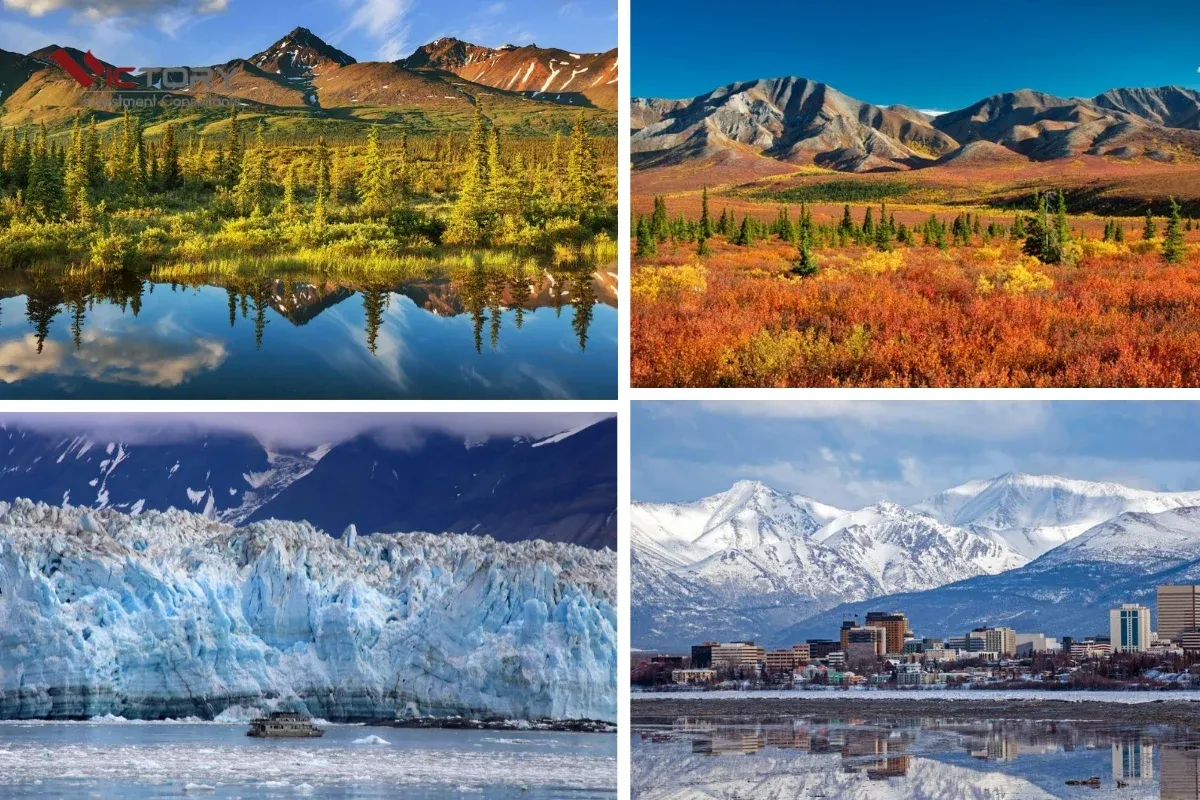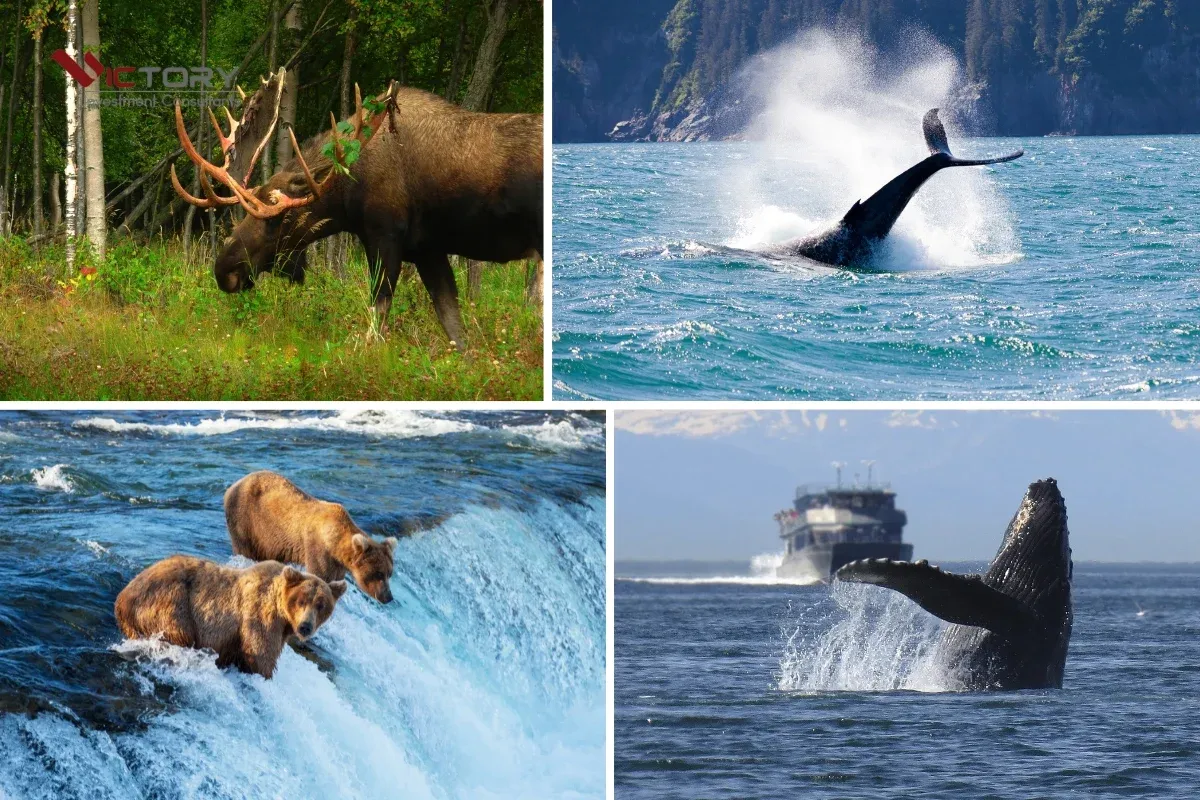Alaska, a land of wonders, is renowned for its pristine wilderness, the magical aurora borealis, and unique natural phenomena. However, few are aware that Alaska’s harsh yet captivating climate is profoundly influenced by ocean currents. So, how do ocean currents affect Alaska’s climate characteristics? Join Discovery To Wonders as we explore this mystery to better understand this most unique state in the United States.
Alaska is not only the largest state in the US but also a convergence point of numerous special natural elements. From its geographical location spanning multiple latitudes to its diverse terrain and the powerful impact of the ocean, all these factors create a complex and incredibly fascinating climate picture. Among these, ocean currents play a role like invisible rivers in the sea, carrying warmth or cold, largely determining the weather characteristics of this land.
Ocean Currents and Their Role in Shaping Alaska’s Climate
Overview of ocean currents
Ocean currents are continuous movements of seawater on the ocean’s surface, formed by factors such as wind, differences in temperature and salinity, the Coriolis effect, and seabed topography. Ocean currents play a crucial role in regulating global climate by transporting heat from the equator towards the poles and vice versa.
Alaska, with its unique geographical location bordering the Arctic and Pacific Oceans, is directly influenced by major Pacific Ocean currents. These currents carry warmth and moisture, strongly affecting the temperature, precipitation, and other climatic factors of the state.
Main ocean currents affecting Alaska
Two main ocean currents from the Pacific Ocean influence Alaska’s climate:
- Alaska Current: This is a warm current flowing northward along the southern and southwestern coast of Alaska. The Alaska Current is a branch of the North Pacific Current and plays a vital role in bringing warmth to coastal Alaska.
- Aleutian Current: This current flows westward along the Aleutian Islands and then turns north into the Bering Sea. The Aleutian Current is also a warm current, contributing to warming the Aleutian Islands and the Bering Sea region.

Impact of warm ocean currents on Alaska’s climate
The Alaska and Aleutian Currents are both warm currents, carrying warmer water from the more temperate Pacific Ocean to Alaska. This has a significant impact on the state’s climate:
- Temperature regulation: Warm ocean currents help moderate winter temperatures in coastal Alaska, especially in the south and southwest. Thanks to these warm currents, winter temperatures in coastal cities like Juneau and Anchorage are not as harsh as in inland areas at the same latitude.
- Increased rainfall and snowfall: Water vapor evaporating from warm ocean currents provides moisture to the air, leading to significant rainfall and snowfall in coastal Alaska. The southern coast of Alaska is one of the wettest places in North America, with heavy snowfall in winter, creating conditions for winter sports and magnificent natural landscapes.
- Impact on marine ecosystems: Warm ocean currents carry nutrients and create favorable conditions for the development of marine life. Alaska’s waters are renowned for their high biodiversity, home to many species of fish, marine mammals, and rare seabirds.
Climate Contrast Between Coastal and Inland Alaska
The influence of ocean currents is not uniform across Alaska, creating significant climate differences between coastal and inland regions:
- Coastal Alaska: This area is directly influenced by warm ocean currents, resulting in a milder climate compared to other regions at the same latitude. Winters are not too cold, summers are cool, and rainfall and snowfall are abundant. However, the coast also frequently experiences fog and strong winds.
- Inland Alaska: Located deep within the continent, this region is less influenced by warm ocean currents. Inland Alaska’s climate is harshly continental, with very cold winters (temperatures can drop below -50°C/-58°F) and hot summers (can rise above 30°C/86°F). Rainfall and snowfall in the interior are less than in the coastal region.

Other factors affecting Alaska’s climate
Besides ocean currents, Alaska’s climate is also influenced by several other factors, including:
- Latitude: Alaska’s geographical location spanning multiple latitudes results in significant differences in the amount of sunlight received throughout the year. Northern Alaska experiences the “midnight sun” in summer and the “polar night” in winter.
- Terrain: Alaska’s rugged mountainous terrain creates climate variations based on altitude and slope orientation. High mountain areas have colder climates and heavier snowfall than plains and valleys.
- Wind: Wind also plays a crucial role in distributing temperature and humidity across Alaska. Winds from the ocean bring warmth and moisture inland, while winds from the Arctic bring cold air southward.
Alaska’s Climate and Unique Travel Experiences
Alaska’s unique climate offers unparalleled travel experiences:
- Summer: Warm weather and endless daylight make summer the ideal time to explore the wilderness, engage in outdoor activities such as hiking, kayaking, fishing, and wildlife viewing. The “midnight sun” phenomenon is also a fascinating experience not to be missed.
- Winter: Winter in Alaska is a paradise for snow lovers and winter activity enthusiasts. You can enjoy skiing, snowmobiling, ice fishing, and especially admire the spectacular aurora borealis dancing across the night sky.

Conclusion
Ocean current characteristics significantly influence Alaska’s climate, especially in the coastal region. Warm ocean currents help moderate temperatures, increase rainfall and snowfall, and create favorable conditions for marine ecosystems to thrive. However, Alaska’s climate remains harsh, particularly in the interior, offering unique challenges and experiences for those seeking to explore this land.
Understanding the influence of ocean currents and other climatic factors will help you better plan your trip to Alaska, choose the right time to visit, and prepare appropriate clothing and gear to fully enjoy the beauty and wonder of the “Land of the Midnight Sun.” Let Discovery To Wonders accompany you on your journey to explore Alaska and other fascinating destinations around the world!